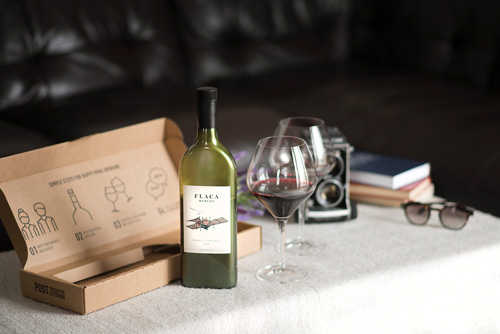Sustainability in the wine industry
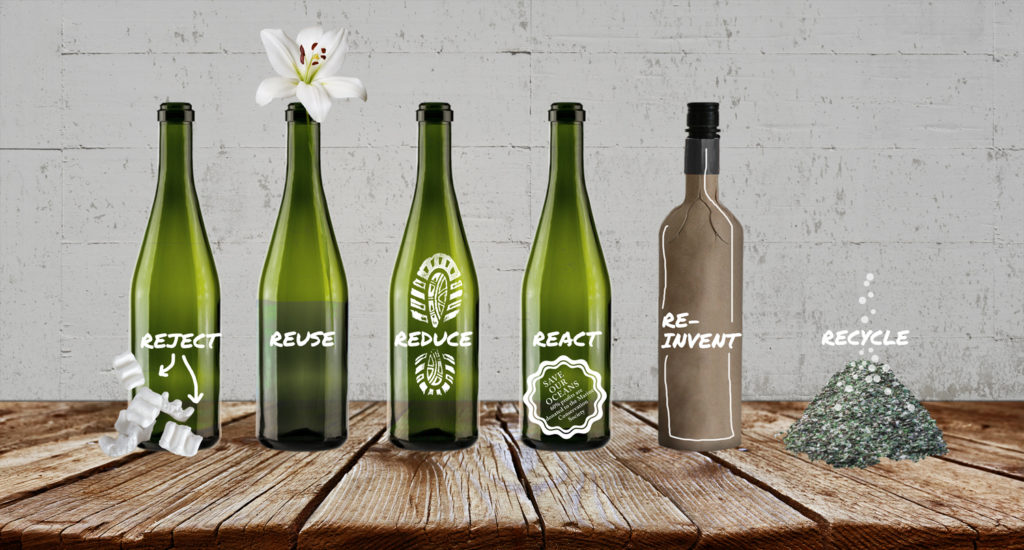
The wine industry has improved its eco-friendly credentials of late, with many forward-thinking producers working with innovative marketers and designers to introduce more environmentally packaging.
However, sustainability is still often an after-thought, rather than something that is ‘baked in’ to product development and marketing.
I believe that by including sustainability into the marketing strategy right at the start, we can reduce the industry’s impact on the environment, and delight consumers who are looking for more sustainable products into the bargain.
But at present, this is not the norm.
Imagine a family-owned vineyard, run by wonderful, down-to-earth people, who work hard on their land. They are aware of their impact on the environment and proud of what they put into their soil, vines and back into the local community. They produce fantastic wine, and they need to sell it.
So, they hire a marketer who takes the product to market. Consumers pick the beautiful wine, enjoy it then toss the bottle into the recycling bin.
They’re happy. After all, glass is recyclable, isn’t it?
Recycling is not all we could wish
According to Timothy Gent’s article in April 2020 on glass recycling, in the UK, glass is recycled less than cardboard, paper and metal.
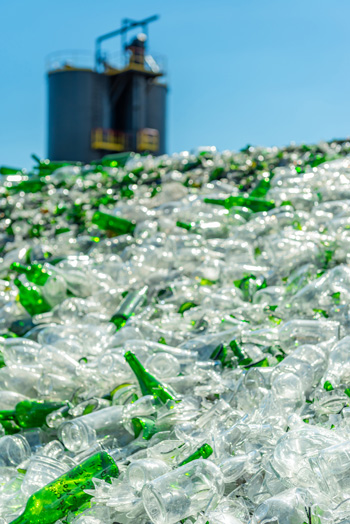 In the UK alone, we consume a million-ton heap of green glass per year and only recycle about 40%.
In the UK alone, we consume a million-ton heap of green glass per year and only recycle about 40%.
Writing on the Thrifty Fifty wine blog, Nicola Jenkins from the Waste & Resources Action Programme (WRAP) says we should be recycling 60% or face EU fines. But we don’t even get close to 40%. After Brexit and without these targets, will the UK prioritise better glass recycling? Nicola says the answer is not just to recycle more, but to adopt a policy of reducing, re-using and only recycling as a last option.
And that’s where clever design and marketing come in.
Linking Sustainability to Sales
Consumers are becoming increasingly aware of these eye-watering statistics. The under-forties in particular are voting with their wallets, choosing more eco-friendly products and packaging ahead of those that may look good, but which have poor sustainability credentials.
According to surveys conducted by GlobalData and Tandberg, half of UK consumers are seeking more eco-friendly products, so addressing this need should be a part of every producer’s marketing strategy. Sustainability can’t be ignored simply because the wine industry has ‘always done it this way’.
In my example, the family wine producer didn’t know what eco-friendly options they had to improve the sustainability of their wines and to help consumers minimise their carbon footprint.
And they aren’t even aware that the packaging they choose could be hurting sales of their glorious wine.
Time to ring the alarm bells
The marketers advising producers like the family vineyard in my story are ideally placed to develop a strategy that ensures that the wine can still look amazing, but which also support sustainability and – crucially – will include the growing band of consumers who are doing their homework and spending their money on more sustainable products.
As a designer specialising in the wine industry, I believe that it is essential for me to do my research, stay current with eco-trends and use my creativity to find ways to use lower-impact wine packaging design and materials as an integral part of a wine’s brand.
The point at which marketers and designers can effect real change is right at the start of wine production: before the product hits the shelves, before it becomes the consumer’s problem and before it can jeapordise the producer’s sales.
Standing out from the crowd – sustainably
The answer is to make the precept of conservation and sustainability part of the wine’s branding and positioning. This is the point where a producer, their designer and marketer can create powerful messaging together from the get-go to create environmentally friendly products and packaging, and start to show consumers about how their choices can make a difference.
As a designer, I find using eco-friendly materials and integrating them into the design for wine packaging – bottles, labels, bottle boxes, corks, screw-caps – very exciting and rewarding, as well as making good business sense for the producer.
A good example is the development of the square wine bottle, such as the ones used by California Square. Because the bottle is different, not only does it stand out on the shelf, but it also assists in reducing the producer’s carbon footprint.
The square shape means that more bottles can be packed more closely than traditional round ones, saving on the amount of glass per bottle. It also means that one lorry can carry more bottles in a single delivery: the fewer the boxes, the fewer the emissions.
This is a perfect example of innovative marketers and creative designers working together to make sustainability a reality, whilst also supporting sales.
Four examples of how innovative marketing and design are revolutionising wine packaging:
1) Paper wine bottles
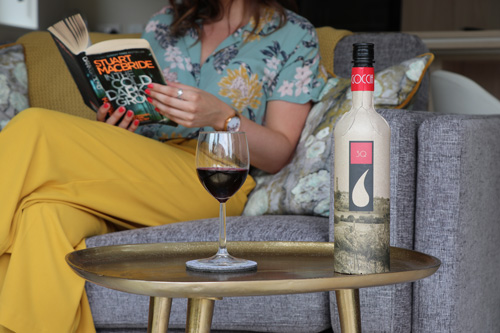
Image from Frugalpac
The bottle is made from 94% recycled paperboard, with a food-grade liner inside. It can be refrigerated and keeps cold for longer. It is lighter, completely recyclable and, because it is paper, can be printed on directly which, for wine industry designers, gives us more surface to play with to create compelling labels.
The cost is the same as a labeled glass bottle.
This paper bottle is making waves and taking glass on by the neck.
2) Recycled plastic bottles
Fully and widely recyclable, these bottles from Garçon Wines are made from recycled plastic (PET or polyethylene terephthalate). It looks more or less like a conventional wine bottle but has flat sides. It is taller than most bottles, with a wider surface for labels, so again offers more room for creative design.
But the genius part is, it also fits through a letterbox. This is opening up a whole new market for the producer, similar to the postable flower services that have been so successful, but with much better environmental credentials.
Shipping is easier because, like California Square bottles, shippers can stack many together, reducing the amount of space needed for storage.
It also weighs less than the glass alternatives, saving on transportation emissions.
Garçon Wines put pre-existing plastic back to good use, shaping it into something new, which, in turn, can also be reused before being recycled. They are having a huge effect on the wine industry and one to seriously consider for those countries who champion recycling.
3) Canned wine
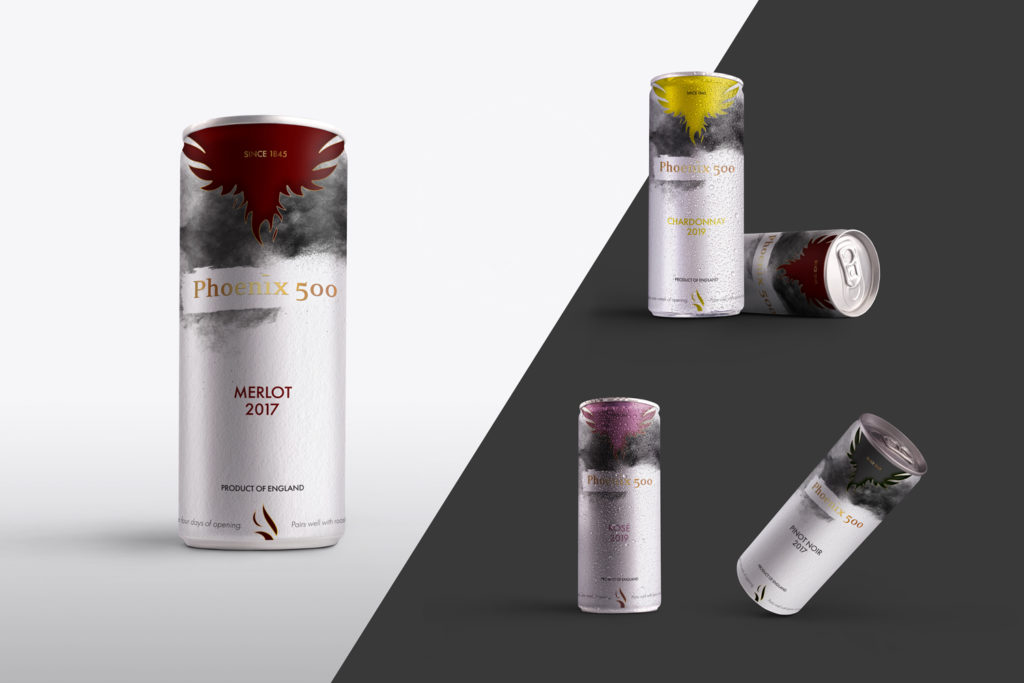
Hill and Sky © All rights reserved.
This is currently trending in the United States and in the UK, Waitrose, Tesco, Sainsbury’s, and Co-op are stocking canned wines.
According to BBC Goodfood, the big wine brands have not yet infiltrated the canned wine industry, but the smaller, lower cost brands are doing well and Gina Schober from Sans Wines, claims they taste the same as if they were from a glass bottle. Aluminium cans are lined with a water-based polymer and therefore the wine is preserved. Again, cans offer a lighter weight than glass and 70% of cans in the UK are recycled.
At present, wine cans are still only manufactured in 250ml measurements. However, it will be innovative designers and marketers who will kick the can and create opportunities for larger measures.
4) Fruit-fibre paper labels
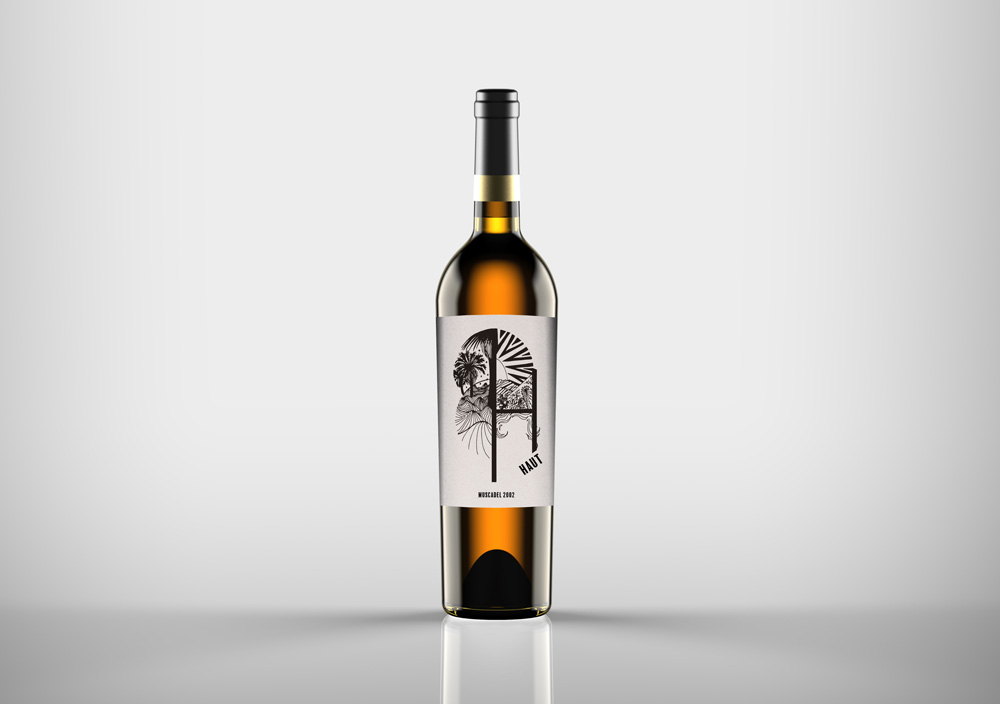
Hill and Sky © All rights reserved.
Royston Labels offer two varieties of fruit-fibre labels: Grape and Apple Touch.
For a wine brand, the grape paper stock is particularly interesting and a great marketing pitch. It is highly sustainable, made from 15% grape waste, 40% recycled fibres and 45% wood pulp.
There are also a number of great paper options for wine labels, many both eco-friendly and beautiful. Chat to us if you want to know which options are currently available.
With innovative thinking and creative design, wine producers can not only support consumers in being more environmentally friendly but can improve their market share by appealing to eco-conscious consumers who are willing to pay a little more for a sustainable product.
Thinking outside the bottle
It’s not all about finding new materials: there are plenty of ways whereby using clever design and marketing, the wine industry could improve the sustainability of its products:
A. Lose Weight
By reducing the weight to 300g from the average weight of a bottle from 500g to 400g, 20% less green glass would need to go into the recycling process.
B. Go Large
Traditionally bottles were made at 750ml as that is the lung capacity of a glassblower. However today, all wine bottles are machine-made and could be produced in large sizes such as 1 litre, reducing the amount of glass used overall and offering consumers more choice in how they buy their wine.
C. Dump the Punt!
That indentation at the bottom of the wine bottle – the punt – is also a legacy from traditional glassblowing techniques and not necessary today. If we could forego the punt, we would have more wine per bottle, so less glass per glass of wine!
D. Pack with Biodegradable material
Protecting with Styrofoam is so ‘old school’ now. There are many better substitutes made of biodegradable materials for card bottle separators, corrugated paper bubble wrap, mushroom packaging and the likes. It is truly exciting when we start minimising the need for plastics.
As a designer who passionately believes that you can combine sustainability with commerciality, I love sharing these alternatives with winemakers, wineries and beverage companies to get them thinking differently.
By starting with small changes, eventually, sustainability will be the norm.
Wouldn’t it be great if one day, every wine bottle we toss into the recycling bin is either fully recyclable or compostable; that it has no glue which will harm the soil; that it has not contributed to depleting the cork forests and has arrived at our door in recyclable materials, keeping our carbon emissions to a minimum.
I believe that wine marketers and designers can drive that change.
If you want to find out how to make your wine or beverage packaging more sustainable and saleable, get in touch today.
We also give away many great tips on how to build a robust wine brand in our poster.
© By Aline Nienaber, Creative Director at Hill and Sky.
November 2020


